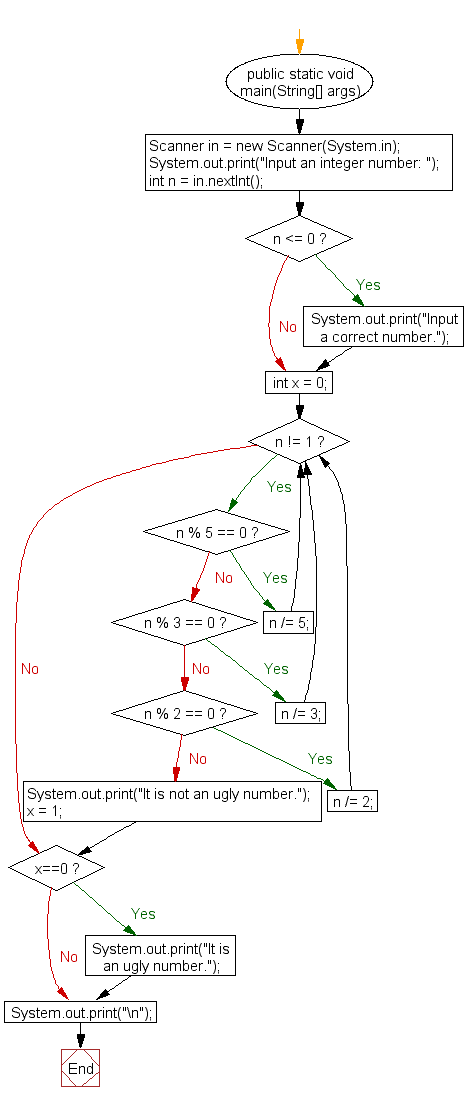Java: Check whether a given number is an ugly number
Check Ugly Number
Write a Java program to check whether a given number is ugly.
In number system, ugly numbers are positive numbers whose only prime factors are 2, 3 or 5. First 10 ugly numbers are 1, 2, 3, 4, 5, 6, 8, 9, 10, 12. By convention, 1 is included.
Test Data: Input an integer number: 235
Pictorial Presentation:
Sample Solution:
Java Code:
import java.util.Scanner;
public class Exercise1 {
public static void main(String[] args){
Scanner in = new Scanner(System.in);
System.out.print("Input an integer number: ");
int n = in.nextInt();
if (n <= 0) {
System.out.print("Input a correct number.");
}
int x = 0;
while (n != 1) {
if (n % 5 == 0) {
n /= 5;
} else if (n % 3 == 0) {
n /= 3;
} else if (n % 2 == 0) {
n /= 2;
} else {
System.out.print("It is not an ugly number.");
x = 1;
break;
}
}
if (x==0)
System.out.print("It is an ugly number.");
System.out.print("\n");
}
}
Sample Output:
Input an integer number: 235 It is not an ugly number.
Flowchart:

For more Practice: Solve these Related Problems:
- Write a Java program to recursively check if a number is ugly by continuously dividing it by 2, 3, and 5.
- Write a Java program to generate all ugly numbers up to a specified limit using dynamic programming.
- Write a Java program to verify the ugly number property by performing prime factorization and ensuring only 2, 3, and 5 are factors.
- Write a Java program to count the total number of ugly numbers in a given array using iterative methods.
Go to:
PREV : Java Number Exercises Home
NEXT : Categorize Numbers: Abundant, Deficient, Perfect.
Java Code Editor:
Contribute your code and comments through Disqus.
What is the difficulty level of this exercise?
Test your Programming skills with w3resource's quiz.
